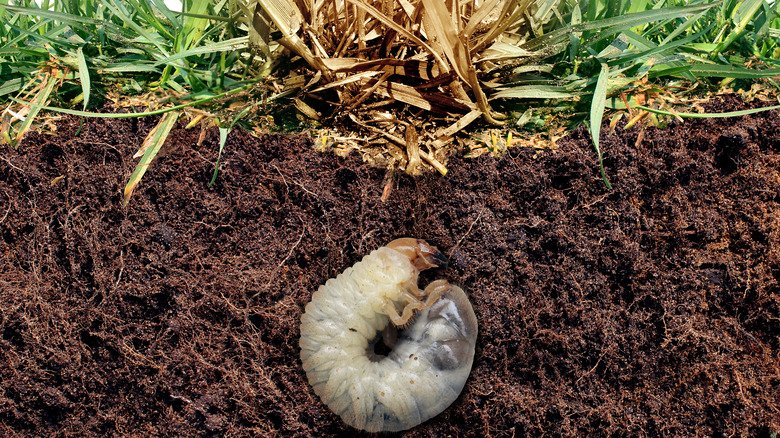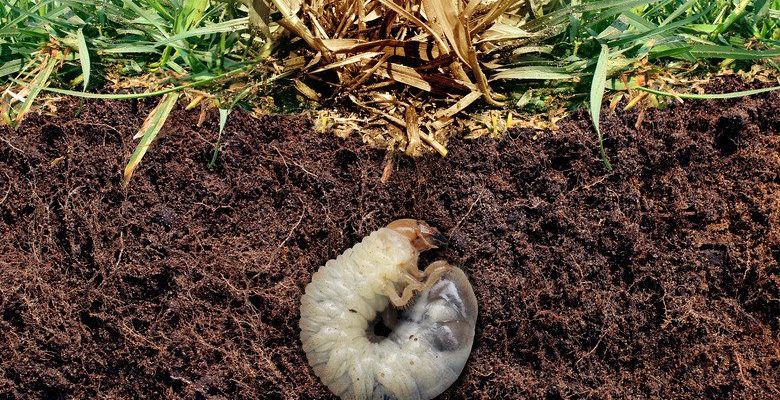
Think of your lawn as a complex ecosystem, where everything is connected. Just as you wouldn’t blame a single ingredient for a dish gone wrong, we can’t point the finger solely at grub worms when it comes to lawn health. Let’s dig into some of these common myths about grub worms and lawn browning. It might just change how you view your green space!
What are Grub Worms?
Let’s start at the beginning: what exactly are grub worms? These little guys are the larvae of various beetles, such as Japanese beetles or June bugs. They’re typically white with a thick body and have a distinct curling shape. Imagine a tiny, fat caterpillar curled up in a ball. You might find them lurking just underground, feasting on the roots of grass and other plants.
Grub worms are often found in lawns during the late summer and early fall. They thrive in moist conditions, making your yard their paradise. While they do love to munch on roots, it’s essential to understand that not all lawn browning is due to their presence. In fact, many other factors can cause grass to turn brown.
Myth 1: Grub Worms Are Always the Cause of Lawn Browning
One of the most persistent myths is that if your lawn is browning, it’s a sure sign of grub worms. Let’s clear that up right now. While grub worms can cause damage, they aren’t the only culprit. Things like drought, poor soil health, and improper mowing habits can lead to brown patches as well.
For instance, if you’ve been keeping your lawn too short, the grass won’t have enough leaf surface area to photosynthesize effectively. This can lead to stress and browning, all while grub worms might be living peacefully beneath the surface. So, the next time you notice brown patches, take a good look and consider all the factors at play.
Myth 2: You Need Chemical Treatments for Grub Worms
Another commonly held belief is that the only solution for grub worms is to douse your lawn with chemical pesticides. Here’s the thing: while these treatments can be effective, they aren’t always necessary and can harm beneficial insects. Instead, consider adopting a more holistic approach.
Natural remedies, such as introducing beneficial nematodes or even certain predatory birds, can help manage grub populations. Additionally, maintaining a healthy lawn through proper watering and aeration can reduce the chances of an infestation. Think of it like keeping your immune system strong—when your lawn is healthy, it’s better equipped to fend off pests.
Myth 3: All Grub Worms Are Bad for Your Lawn
Not all grub worms are villains in the lawn drama. Some species of grub worms can actually be harmless or even beneficial. For example, certain types of beetle larvae can help aerate the soil as they move through it. So, before you start panicking upon spotting these little critters, take a moment to identify the type of grub worm.
If you’re unsure, consider digging up a small section of your lawn to check for signs of damage. Are the roots in good shape, or are they completely gnawed away? This can give you a clearer picture of whether you’re dealing with a harmful infestation or not.
Myth 4: Lawn Browning Happens Overnight
Let’s set the record straight: lawn browning doesn’t just happen overnight. It’s usually a gradual process that develops over time, resulting from ongoing stressors on the grass. Imagine your lawn as a marathon runner. If it’s not taken care of—like not getting enough water or nutrients—it will gradually show signs of decline.
One day, you might see a small brown patch, but if those stressors continue without intervention, that patch can grow. Regular lawn care practices, including watering, fertilizing, and aeration, can help maintain your lawn’s health and prevent those dreaded brown patches.
Myth 5: You Can’t Prevent Grub Worm Infestations
Ah, the myth that prevention is impossible. In reality, there are plenty of proactive steps you can take to keep grub worms at bay. Start by ensuring your lawn is healthy and well-maintained. Here are some tips to consider:
- Water Deeply: Instead of frequent shallow watering, aim for deep watering a couple of times a week. This encourages strong root growth.
- Fertilize Wisely: A balanced fertilizer can help your grass recover from any potential damage.
- Aerate the Soil: Aerating your lawn allows nutrients and water to penetrate deeper, promoting root health.
- Monitor Regularly: Keep an eye on any changes in your lawn so you can address potential issues before they escalate.
By implementing these practices, you can create a lawn environment that’s less inviting to grub worms, reducing the chances of an infestation.
In the end, understanding the relationship between grub worms and lawn health is about seeing the bigger picture. While these little critters can cause problems, they aren’t the sole reason for lawn browning. By educating yourself about the various factors at play and debunking common myths, you can take a more balanced approach to lawn care.
So, next time you see a brown patch, remember: it might not just be the grub worms. Take a step back, examine your lawn’s overall health, and tackle any issues head-on with a solid care plan. With the right knowledge and approach, you can keep your lawn thriving and beautiful all season long!

